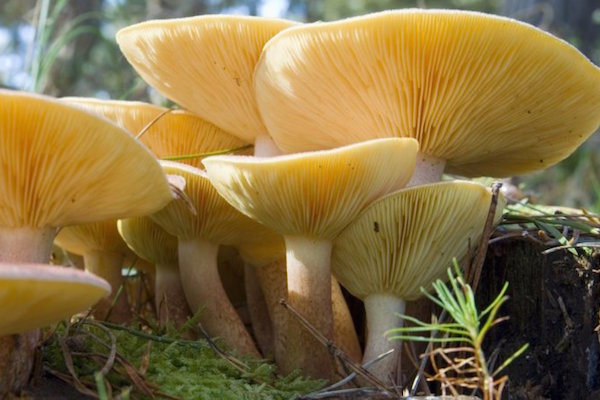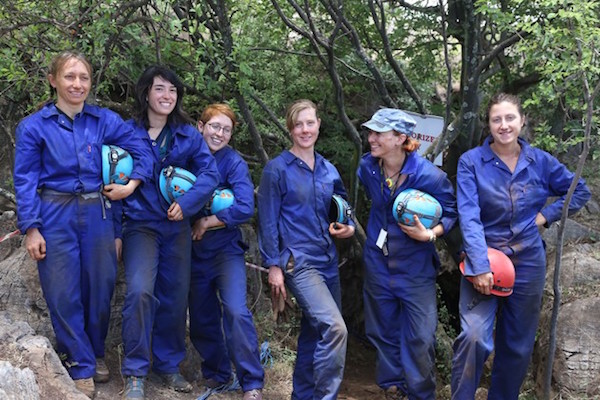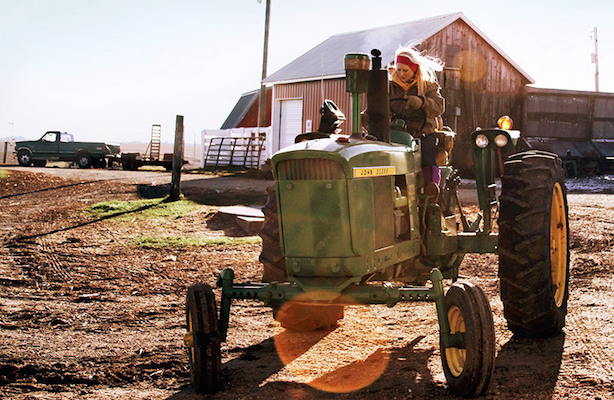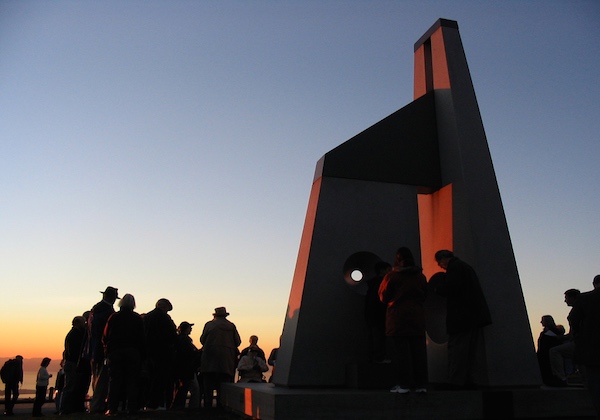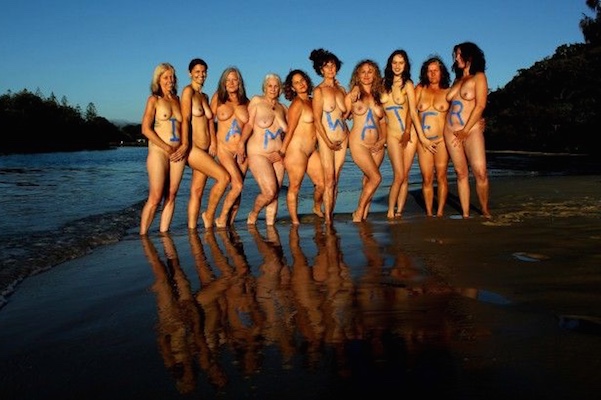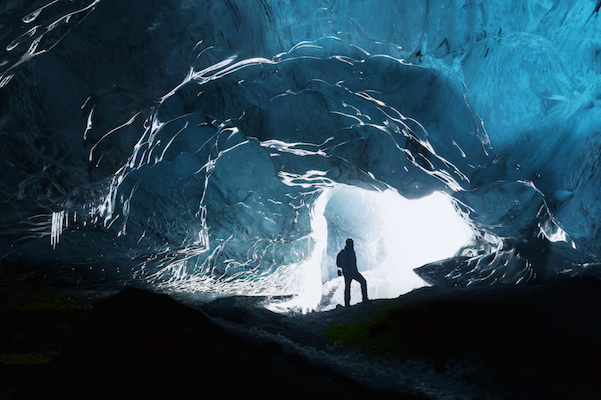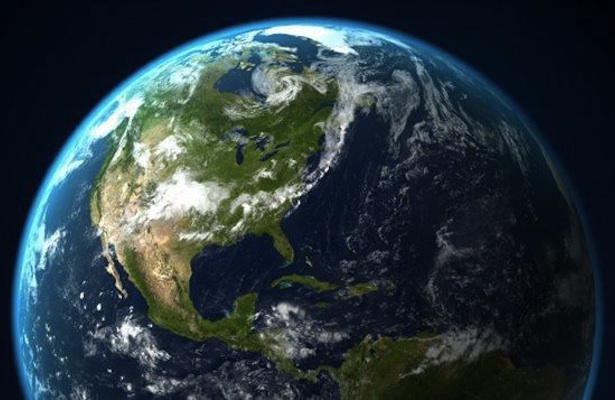Whether it’s setting up a distributed network or devising the best way to share resources, businesses are learning that the natural world has a lot of these things figured out. An LGBTQ activist, a green-business consultant, and a nun walk into a redwood forest… New take on an old joke, right? But it really happened. These three were just a few of a diverse set of participants who took part in the first-ever training linking social innovation and biomimicry. The practice of looking to emulate nature for innovation and sustainable solutions (a.k.a. biomimicry) has been on the rise for decades. Since the 1997 publication of Janine Benyus’s seminal book Biomimicry: Innovation Inspired by Nature, the methodology has especially taken root in the fields of design, architecture, and engineering. There are hundreds of biomimetic examples–like the bullet train that borrows the aerodynamic form of a kingfisher’s beak; or non-toxic adhesives inspired by blue mussels. Now biomimicry is taking root in social innovation and could no doubt be adaptable in organizational behavior more generally. It’s not just about nature’s “design.” The living world also has much to teach us about adaptation, resilience, cooperation, and networked systems that thrive functioning together. What if your company could distribute […]
Continue reading... →Lee Berger led a team of trowel-blazing scientists behind one of the richest collections of hominin fossils ever discovered Lee Berger put his ad up on Facebook on October 7th, 2013. He needed diggers for an exciting expedition. They had to have experience in palaeontology or archaeology, and they had to be willing to drop everything and fly to South Africa within the month. “The catch is this—the person must be skinny and preferably small,” he wrote. “They must not be claustrophobic, they must be fit, they should have some caving experience, climbing experience would be a bonus.”“I thought maybe there were three or four people in the world who would fit that criteria,” Berger recalls. “Within a few days, I had 60 applicants, all qualified. I picked six.” They were all women and all skinny—fortunately so, given what happened next. Berger, a palaeoanthropologist at the University of the Witwatersrand, sent them into the Rising Star Cave, and asked them to squeeze themselves through a long vertical chute, which narrowed to a gap just 18 centimeters wide. That gap was all that separated them from the bones of a new species of ancient human, or hominin, which the team named […]
Continue reading... →With the end of the year just around the corner, we wanted to reflect on all that we have to be grateful for in 2015. There’s a lot to celebrate! From promoting conservation to empowering beginning farmers, here is the National Sustainable Agriculture Coalition’s list of the Top 15 Highlights of 2015: Conservation and Environment 1. 2015 opened with the first ever Conservation Stewardship Program (CSP) contract renewals. CSP, a program that NSAC has championed, is the only farm bill conservation program to support performance-based advanced conservation systems for working farms. 70 percent of expiring acres were renewed by producers ensuring that more than 17 million acres will continue to be supported through new and ongoing conservation activities. The year also ended on a high note for CSP: the Natural Resources Conservation Service (NRCS) postponed the CSP overhaul until 2017, buying more time for stakeholder input and outreach around the changes, and just this week Congress approved an omnibus budget bill that eliminated House-proposed cuts to CSP funding in 2016. 2. National Sustainable Agriculture Coalition (NSAC) member organizations and supporters submitted hundreds of comments to USDA recommending ways to improve the interim rules to implement 2014 Farm Bill changes to conservation programs, […]
Continue reading... →“Something in us needs to know that at the end of the longest night, there will be light.” In 2015, the winter solstice in the Northern Hemisphere will begin on Dec. 22 at 4:48 a.m. UTC. To calculate the turning point in your time zone, click here. Officially the first day of winter, the winter solstice occurs when the North Pole is tilted 23.5 degrees away from the sun. This is the longest night of the year, meaning that despite the cold winter, the days get progressively longer after the winter solstice until the summer solstice in 2016. The winter solstice is celebrated by many people around the world as the beginning of the return of the sun, and darkness turning into light. The Talmud recognizes the winter solstice as “Tekufat Tevet.” In China, the Dongzhi Festival is celebrated on the Winter Solstice by families getting together and eating special festive food. Until the 16th century, the winter months were a time of famine in northern Europe. Most cattle were slaughtered so that they wouldn’t have to be fed during the winter, making the solstice a time when fresh meat was plentiful. Most celebrations of the winter solstice in Europe involved merriment […]
Continue reading... →A group of north coast women have put their bodies on the line, literally, in an effort to stop councils and government authorities spraying glyphosate in their weed reduction activities. Glyphosate, which was invented and is widely marketed by multinational chemical company Monsanto under the name Roundup, was named a ‘probable carcinogen’ by the World Health Organisation in March this year. This action, together with the forthcoming trial of Monsanto at the International Court of Justice next year has prompted the women to take a stand. With ‘I am water’ written on their bodies, the women are bringing attention to the protection of the essential resource from ongoing pollution with herbicides in the region. ‘Our bodies are made of water and we are one and the same as the environment. If we pollute the water with pesticides, we pollute ourselves,’ said Nadia de Sousa Pietramale, local bush regenerator and coordinator of Byron Shire Chemical Free Landcare. ‘While Monsanto will go on trial for crimes against humanity and nature, in Byron shire, glyphosate, a product developed by the company and an active ingredient of many herbicides, is still being poured into the environment where it ends up in our local rivers […]
Continue reading... →Lots of us have had a moment—a revelation, observation, or interaction—when climate change became more than a concept. What’s yours? By Liz Pleasant The other night, I was sitting in bed scrolling through Twitter when I saw the headline: “Report: Global temperature hike already halfway to ‘two degree warming’ limit.” I clicked it. The writer of the article, Brandon Miller, explained why many scientists agree that two degrees of warming is the cutoff point for “controllable” climate change, and how new reports show we’re already halfway there. On top of that, we just experienced the warmest October since observations began in 1879, and October was the sixth consecutive month to break a global temperature record. Seven of the 10 warmest months ever recorded happened in 2015. Talking about climate change isn’t new for me. I work at YES! Magazine, where we cover climate issues all the time. I read pitches on sea-level rise and sort through headlines on droughts, storms, and a fragile food system pretty much every day. But for some reason, this report really stuck with me. It scared me. I was still thinking about it the next morning while discussing coverage of the Paris climate talks with other […]
Continue reading... →Earth has a natural rhythm linked to the universe around it. Women share that connection. There are days we feel open and happy, and other days when we may feel unclear and sad. Why? Is there a purpose to the highs and lows? What can we learn from the pulsations of life and how can understanding this flow guide us to new heights? Nature at its core is women. There is a direct connection — a commonality to the earth and her surroundings — which is uniquely related to women. Naturally, women experience a monthly cycle. We are joined energetically to the phases of the moon, the cycles of the seasons and the flow of sunrise and sunset. Once you step back from the immediate experience of distinguishing between cloudy and sunny days, the visual of the flow of nature takes form. This natural flow can charge you, feed you and empower you. Once realized, the connection is a powerful tool to tap into the natural energy around you. Women are connected to the world in unique ways. We are taught from a very early age and on mental, emotional and physical levels that our life contains ups and downs. […]
Continue reading... →Climate change action can feel so overwhelming, especially when we hear news of natural disasters, politicians who don’t believe in global warming, and companies who keep putting their money into dirty energy. So you might conclude that your voice doesn’t really matter at all in the grand scheme of global climate action. Let me convince you otherwise. I recently met with legendary feminist Eva Cox and discussed why the global environmental movement is facing so many challenges. For her, the key issues were these: We’re too negative. Many environmental activists and organizations focus too strongly on the threats and issues associated with climate change, such as natural disasters and spiraling pollution. This negative information has the effect of scaring people off: they’d rather ignore the issue than address it because it just seems all too hard. Instead, activists need to show the community that climate action has positive effects that help everyone. This uplifting message is much more likely to make people want to do something, rather than just stick their head in the sand. We’re not connecting the dots. It’s easy to pretend that climate change exists in isolation, but in reality it is connected to politics, society, employment, […]
Continue reading... →